AL-AZRAQ
JORDAN
Tucked away in the eastern desert of Jordan, 100km from the capitol Amman, Al-Azraq is a small town in the governance of Zarqa in east central Jrodan. This seemingly small town holds many large wonders within it!
The wetland nature reserve was officially established in 1978 by the Royal Society for Conservation (RSCN) and it covers 12km of land. This land is inherently an oasis which is home to many migratory birds and other animals alike. Unfortunately the natural springs have dried out in 1992, which has caused a domino effect leading some migratory birds to switch their travel routs.
A couple of hours drive from the Amman city, the sight of the Al Azraq Wetlands Wildlife reserve seems almost mystical, as if one had been transported to another country entirely. Indeed an oasis situated right in the middle of the desert seems something straight out of a movie. In fact curiously enough according to a small sample poll, many of the locals of Amman have not had the pleasure of witnessing the oasis.
This oasis is home to many species of animals, from the small fish and frogs to the large water buffalo. The birds are seasonal, and if one can come to the oasis at the right time, they would be blessed with the sight of many exotic birds each accompanied by their unique singing style! Many of these traveling birds are only making a quick pit stop between Europe and Africa.
THE WOMEN OF AL-AZRAQ WILDLIFE LODGE
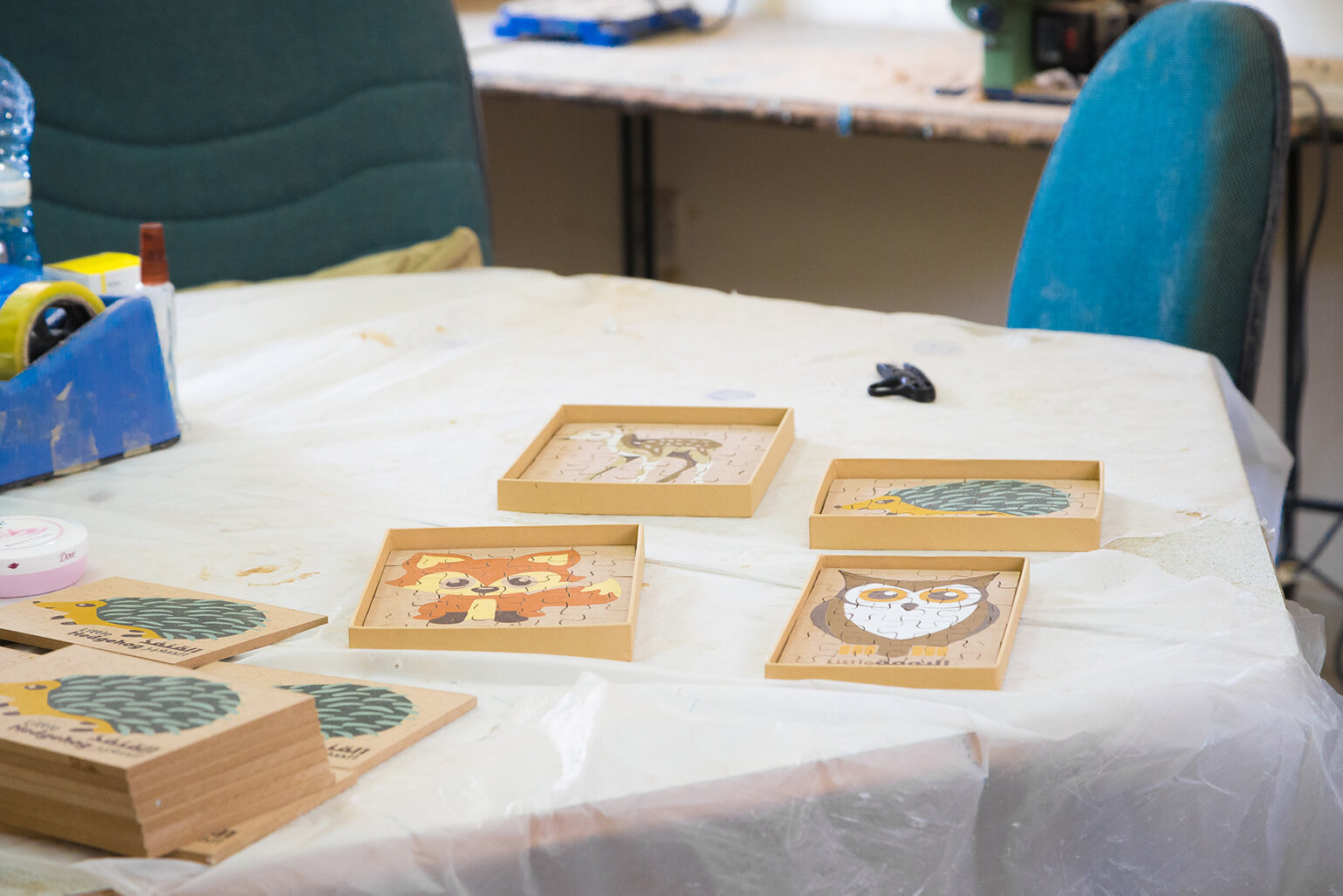
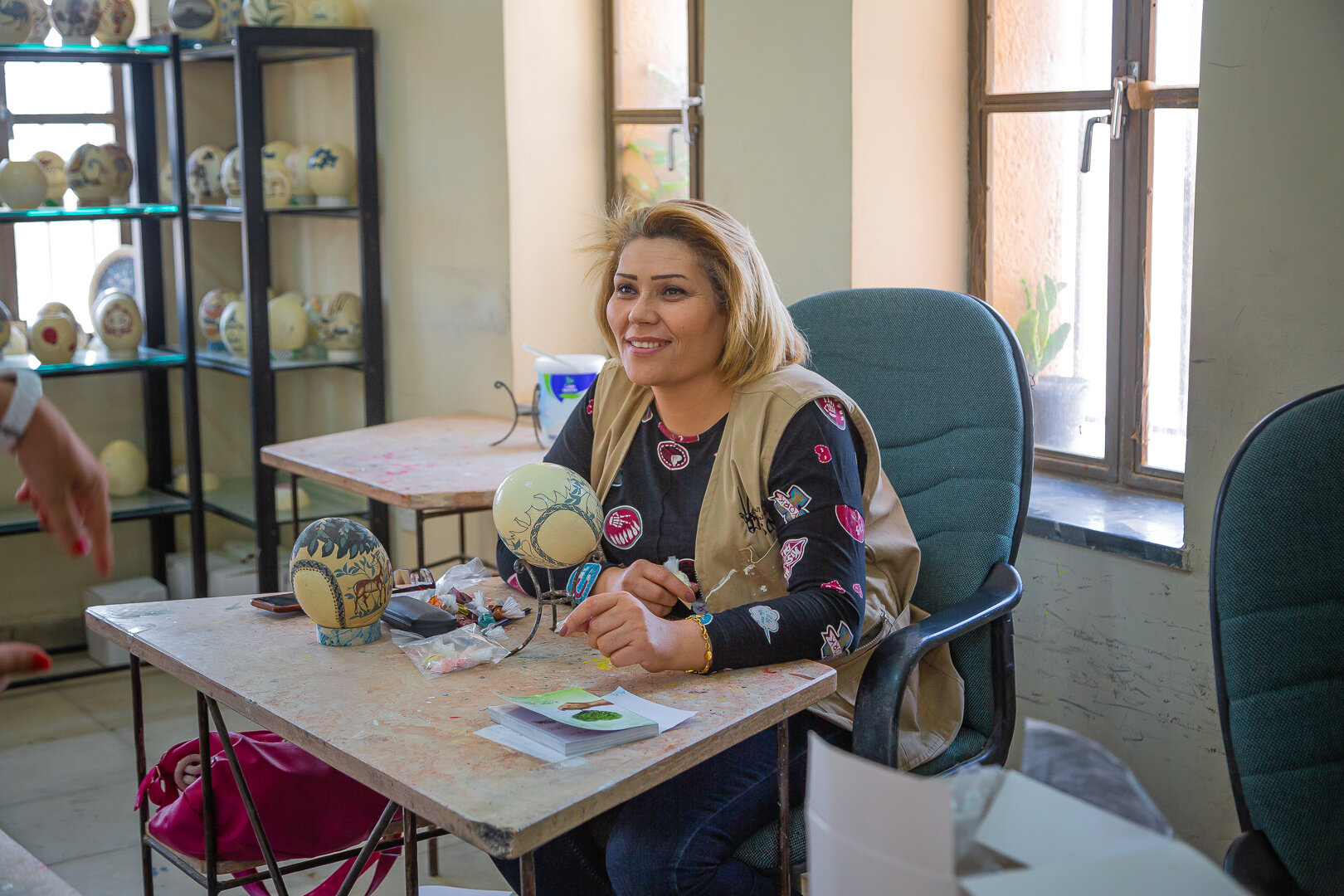
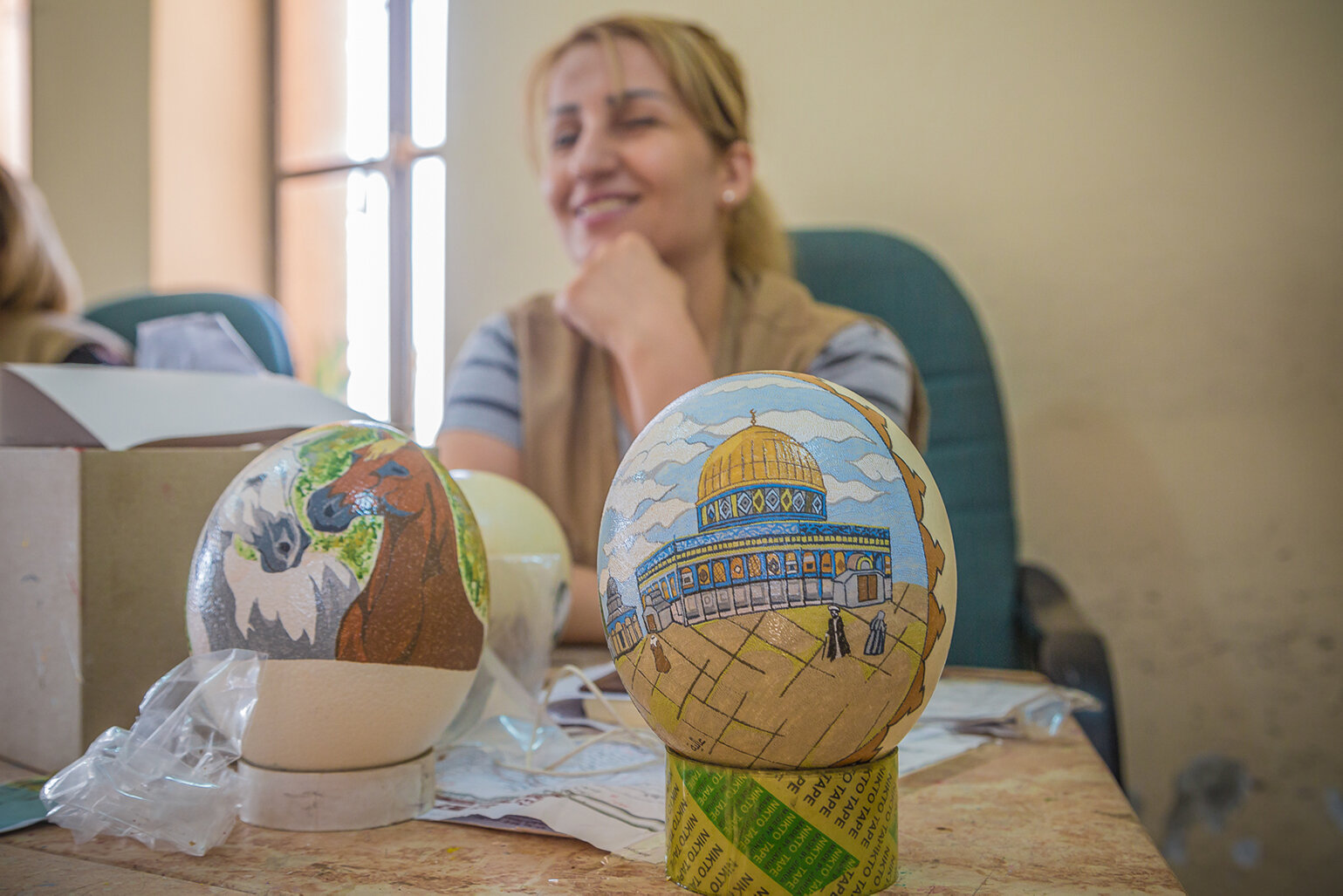
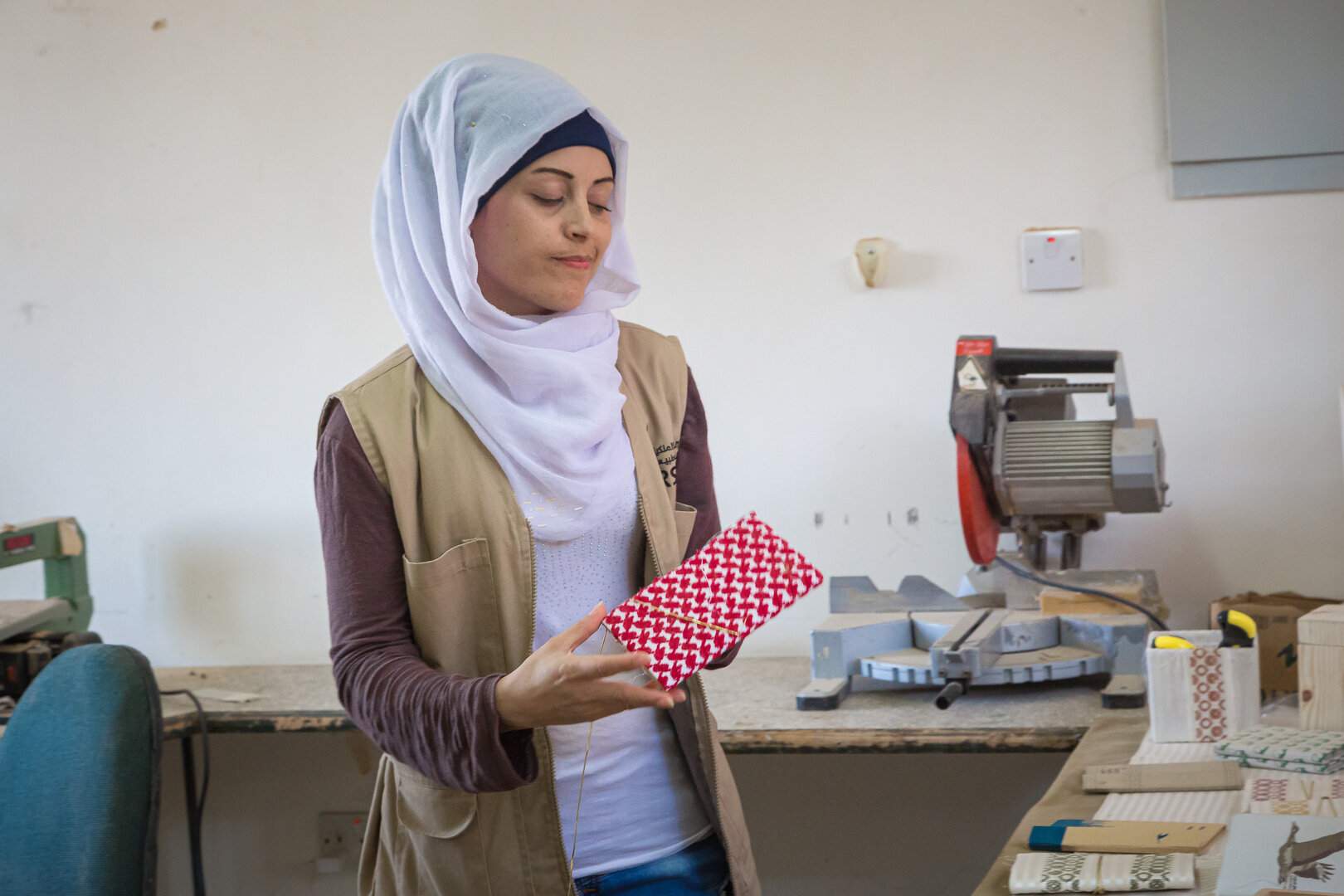
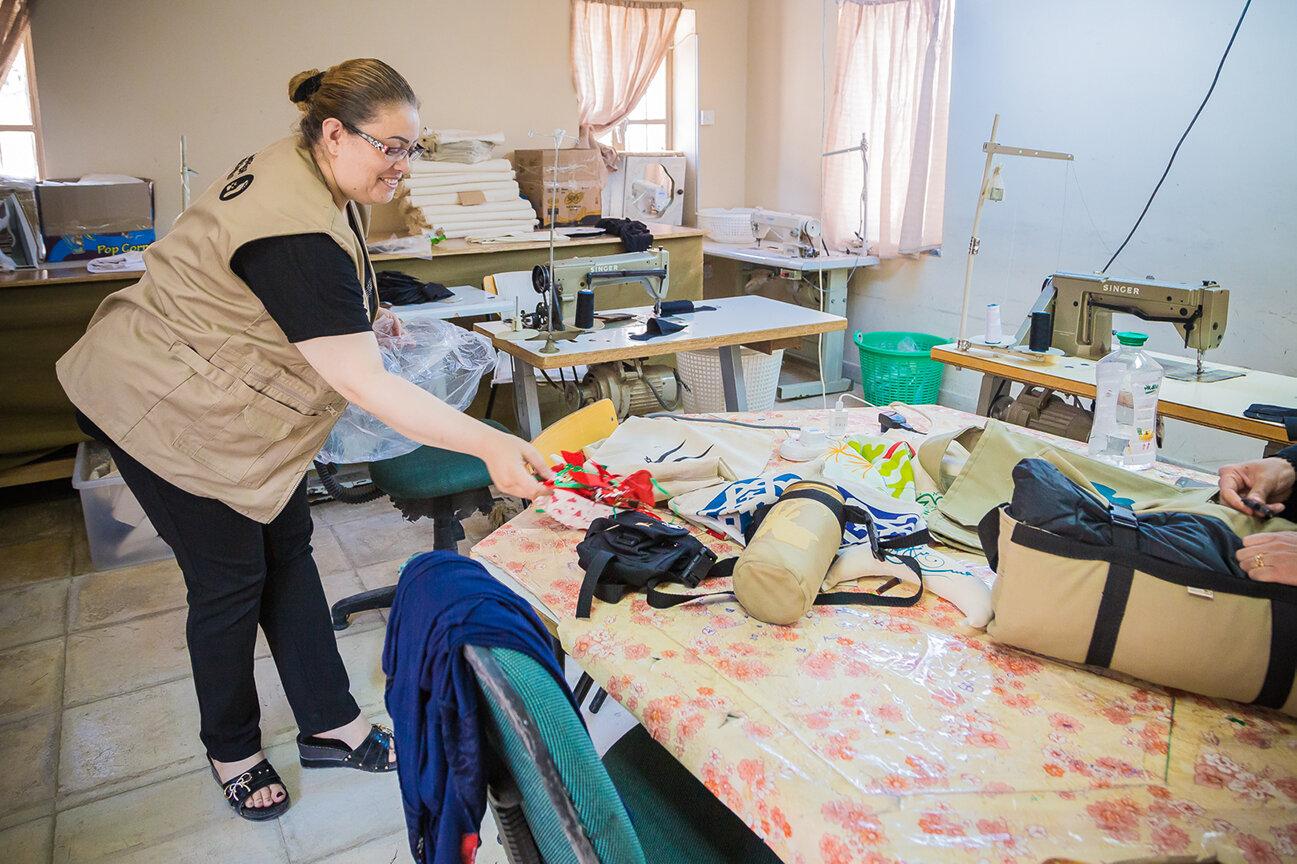
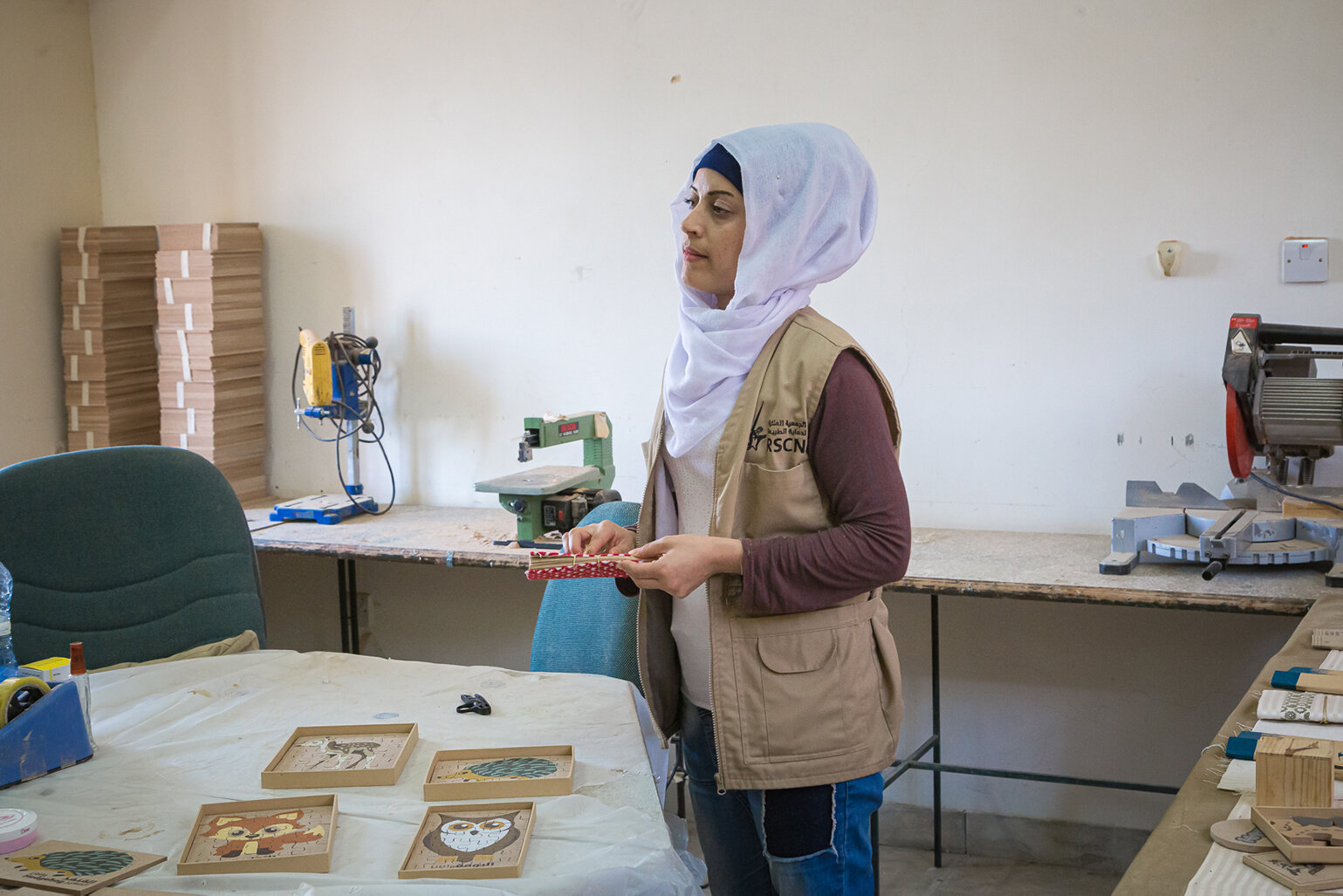

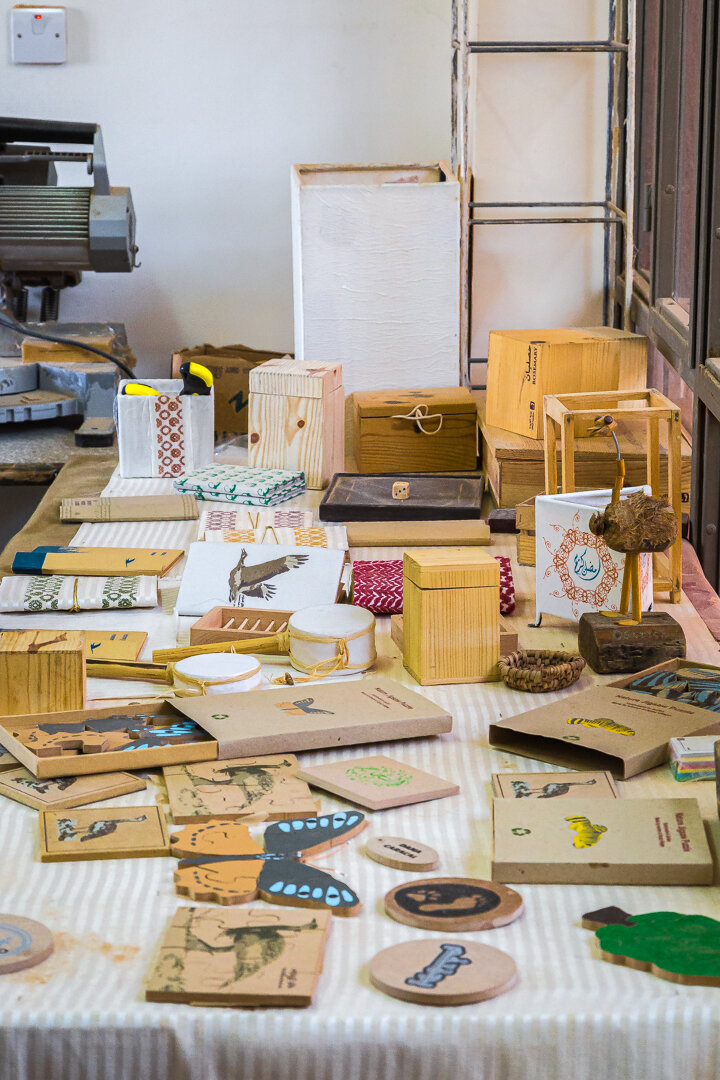
These incredibly talented women work at the Wetland Wildlife Reserve Lodge, in the municipality of Al Azraq. They do a number of creative things from designing, building and selling backpacks, mosaics, frames, sewing traditional clothes, and decorating ostrich eggs. The women all work within walking distance of each other on the Lodge grounds.
The meticulous and intricate process of designing one of these ostrich eggs, is partly what makes it so valuable to tourist and nationals alike. The species of ostrich (Struthio camelus syriacus, or better known as the Syrian ostrich/the Arabian ostrich) is no longer natively found in Jordan, and by the early 20th century the Arabian ostrich began to be rare in general; making the eggs even more valuable.
An ostritch egg on display and for sale at the reception of the weland reserve
THE WETLANDS
Unfortunately Al Azraq Wetlands Wildlife Reserve oasis has been suffering from a devastating and deadly drought. Each year the water levels in this magical oasis deplete putting all the migratory and local animals at risk.
The biodiverse landscape of the wetlands have been in a state of collapse. Jordan has been historically marked by the fact that water is scarce. The Azraq Wetlands provides drinking water to one quarter of Amman. This, along with the Naturals springs stopping to produce water in 1992 has been just part of the tragic picture of the ecological state of affairs. Reports claim that there are more than 500 illegal wells that continue to pump water from the Azraq wetlands damaging the already dying landscape. This has caused the ecological collapse by forcing the migratory birds to stop flying in, as well as killing off much of the population of water buffalo, as only a few remain.
The goal herein is to attempt to raise some awareness to not only the tragic situation, but to highlight the beauty that is abstractly hidden amongst the seemingly mundane flat desert lands. Let it not be the dictated fate to have visited Jordan and not have had the marvelous pleasure of seeing this magical oasis. The transformative environment may seem other worldly, but it would indeed be a mistake to relegate this majestic location to nothing more than a mere passing of memory.


